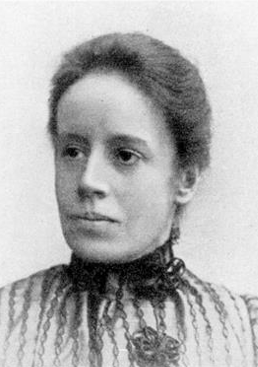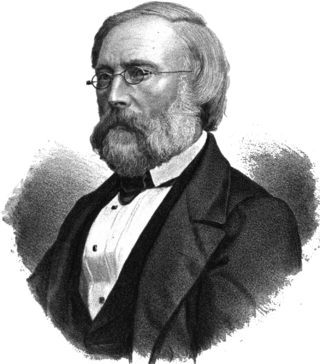
(c.1847)
Carl Johan Fahlcrantz (29 November 1774 - 29 November 1861) was a Swedish painter. [1]

Carl Johan Fahlcrantz (29 November 1774 - 29 November 1861) was a Swedish painter. [1]

He was born in the Stora Tuna Parish of Dalarna, Sweden. He was the son of Johan Fahlcrantz and Gustafva De Brenner. His father was a vicar in Kungsåra parish. His brothers were the sculptor, Axel Magnus Fahlcrantz (1780–1854), and the theologian, Christian Eric Fahlcrantz (1780–1866). His great-grandfather Elias Brenner (1647–1717) was an artist and draftsman. His great-grandmother Sophia Elisabet Brenner (1659–1730) was a writer and poet. [2] [3] [4]
In 1791, he went to Stockholm and secured an apprenticeship as a decorative painter with Johan Gottlob Brusell at the Royal Dramatic Theatre. After one year, he became a student of Emanuel Limnell and lived with his family until around 1800. He also received guidance from Elias Martin and studied landscape painting with Louis Belanger, who had immigrated from France in 1798. Soon, he began to receive numerous orders for landscapes and vedute, often composed with atmospheric lighting. [5] He was especially influenced by Martin, who had made study trips to England. Despite his initial success, he had to make ends meet by taking students and selling some paintings at a discount.
In 1802, he was named a member candidate (agré) at the Royal Swedish Academy of Fine Arts and became a member the following year. In 1805, he and Gustaf Erik Hasselgren received stipends from the Academy for a period of four years. He intended to visit Italy but postponed the trip until 1807, when he asked for permission to spend his money within Sweden. This was agreed to on condition that he submit two landscapes to the Academy each year, to show his progress. He continued to receive the stipend as a travel subsidy for foreign trips to Norway (1827) and Denmark (1829). In 1815, he had become a Professor at the Academy. He was also an honorary member of several academies in Europe and the United States. In addition to orders from the Swedish Royal Family, he received several commissions from Tsar Nicholas I.
He remained single until 1849, when he married Anna Sophie Hagström, a shopkeeper's daughter who was thirty years his junior. He died during 1861 and was buried at St. John's Church, Stockholm.
His works may be seen at the Nationalmuseum, [6] Uppsala University Library, [7] Göteborgs konstmuseum [8] and the Nordiska museet. [9]


Ernst Abraham Josephson (1851–1906) was a Swedish painter and poet. He specialized in portraits, genre scenes of folklife and folklore.

Mårten Eskil Winge was a Swedish artist. He was a professor at the Royal Swedish Academy of Arts. He was associated with the Düsseldorf school of painting. His art was influenced by the Norse mythology themes also found in works by Nils Blommér (1816–1853) and Carl Wahlbom (1810-1858).

Christian Eric Fahlcrantz Swedish theologian and author.

Johan Georg Otto von Rosen was a Swedish painter and greve (count). He specialized in history paintings and portraits, done in the Academic style.

Georg Vilhelm Pauli was a Swedish painter, known primarily for portraits and figures. He was also the author of numerous art-related books.

Sven Richard Bergh was a Swedish painter, art critic and museum manager. Despite many years in France, he remained unattracted to Impressionism, preferring instead the Naturalism of painters such as Jules Bastien-Lepage. He also rejected the idea of creating landscapes en plein aire.

Robert Thegerström was a Swedish painter and graphic artist.

Kilian Christoffer Zoll was a Swedish painter, graphic artist and illustrator in the style of the Düsseldorf School. He created genre scenes, landscapes, altarpieces and portraits.

Fanny Ingeborg Matilda Brate was a Swedish painter. She specialized in genre scenes, featuring families, which are often cited as the inspiration for similar works by Carl Larsson.

Johan Wilhelm Carl Wahlbom was a Swedish painter, illustrator and sculptor.

Elias Brenner was a Finnish born, Swedish artist, draftsman and antiquarian. He is especially known for his work as a portrait miniaturist and a numismatist.

Gustaf Wilhelm Palm was a Swedish landscape painter and art professor.

Axel Wilhelm Nordgren was a Swedish landscape painter.

Johan Zacharias Blackstadius was a Swedish painter, graphic artist and art teacher at what is now the Konstfack in Stockholm. He also restored medieval paintings at several churches. His work consists primarily of historical scenes and folklore motifs.

Henrik Axel Kulle was a Swedish painter who specialized in genre scenes.

Carl Emmerik Skånberg was a Swedish painter. Despite a serious illness that caused him a great deal of suffering, he was a prolific painter and one of the first artists in Sweden to be influenced by Impressionism.

Petter Gabriel Wickenberg, known as Pehr was a Swedish painter and designer who specialized in landscapes with figures.

Josef Wilhelm Wallander was a Swedish painter, graphic artist and art professor who specialized in rural genre scenes.

Per Daniel Holm was a Swedish landscape painter.

Louis Belanger was a French-born Swedish landscape artist.